
Gaozhuang Xishuangjing, Xishuangbanna, Yunnan
From 7 to 12 Jan 2014, I visited the Xishuangbanna Foto Festival at Yunnan, China. I have been asked to curate a show on Cambodian photography and to give a presentation on its development in the last 20 years.
Below is the curatorial intro of the show.
我于2014年1月7日至12日受邀出席云南西双版纳国际摄影节。届时,我负责筹划了一个柬埔寨摄影群展,同时也在讲座上给来宾分析了柬埔寨摄影在过去20年的发展概况。
下边是策展文章。
*
Medicine to Heal: Cambodian Photography since 2000
@ Xishuangbanna Foto Festival 2014, Yunnan, China / 8 Jan to 8 Feb 2014
Featuring Heng Sinith, Vandy Rattana, Vuth Lyno, Khvay Samnang and Lim Sokchanlina
Curated by Zhuang Wubin
In a recent interview, Cambodian photographer Vandy Rattana explains that his artistic practice is a search for “medicine to heal” himself from the trauma of the country’s history.[1] In this way, he frames our understanding of his work along the lines of the cathartic, underpinned by an urgency to make sense of the politics and histories of Cambodia.
“What details make us Cambodians? I want to reveal the internal, to archive Cambodia as much as I can,” asks Vandy. “It’s not for me. We have to tell the world who we are.”[2]
These two quotes by Vandy offer a remarkably encompassing way to approach this modest exhibition of Cambodian photography in Yunnan, a region that shares close ties with the rest of Southeast Asia. Vandy’s place in Cambodian photography is significant because his emergence in 2005 marks a crucial shift in its development.[3] With his first body of work Looking In (2005–06), Vandy establishes his inclination towards documentation, locating his approach beyond press photography, which seems fixated with the mere imageries of Cambodia’s temples and poverty.[4] Erin Gleeson, a specialist of Cambodian art, is partially responsible for contextualising Vandy’s work as contemporary art.[5]
The Cambodian photographers who started working in the 90s, the first generation to do so after the military withdrawal of the Vietnamese in 1989, have not been so fortunate. The likes of Heng Sinith and Mak Remissa (b. 1970; Phnom Penh) stumbled into press photography as a means of bringing food onto the table. For the last two decades, they have served the demand of Western media outlets that wanted local—hence, cheaper—photographers to cover the recovery of Cambodia after the wars and dislocation of the 1970s and the 1980s. However, it is not true to say that they have no interest in art making[6] or in the deployment of photography to add to our understanding of Cambodian history.
Today, we tend to think of the Khmer Rouge (KR) as a brutal polity that brought about untold pain to the Cambodians from 1975 to 1979. In The Victims of History: Voices of the Khmer Rouge Victims and Perpetrators (2002), featured in this exhibition, KR survivor Heng Sinith urges us to reconsider its junior and mid-level comrades, not only as perpetrators of violence, but also as victims of the regime’s top leadership. His work is not an attempt to normalise the cruelty of the KR. Instead, it warns us against the tendency to oversimplify KR history. This is a crucial step in national catharsis.
The main difference between his generation of photographers and Vandy is that the latter has been able to sustain his documentary practice as a contemporary artist while Heng and Mak continue to work as photojournalists for international wire agencies. The next generation of photographers after Vandy started emerging in 2008. There are various reasons that account for the emergence of this heterogeneous group of practitioners. The artists featured here—Vuth Lyno, Khvay Samnang and Lim Sokchanlina—attended the photography workshop led by Stéphane Janin from September 2006 to June 2007 in Phnom Penh. Together with Vandy, they would go on to establish the country’s first artist collective Stiev Selepak (Art Rebels) in 2007.
At the same time, there has also been an increase in opportunities for Cambodians to participate in overseas residency programmes or to learn from visiting photographers in workshops facilitated by Angkor Photo Festival (first edition in 2005) and PhotoPhnomPenh (first edition in 2008), amongst others.[7]
If we plot the trajectories of the photographic practices of the younger artists featured here, it is clear that their beginnings are rooted in the documentation impulse of Vandy Rattana. More recently, and with greater exposure, their photographic practices have become crossed with performance and community engagement. In Khvay Samnang’s Untitled (2011) and Lim Sokchanlina’s Rising Tonlé Sap (2012), both artists respond to the issues of land privatisation and climate change respectively. Clearly aware that other communities around the world also encounter similar problems, Khvay and Lim register their concerns through their performances/interventions, the traces of which can be seen in their photographs. In Thoamada II (2013), Vuth Lyno continues his engagements with the Khmer LGBT (lesbian, gay, bisexual and transgender) communities by staging a series of family portraits, urging us to reconsider the boundaries and limits of family structure in Cambodia and beyond.
In a way, these three bodies of work still share the archiving tendency found in Vandy’s practice, especially in the landscapes and people who are recorded in their photographs. The projects are also cathartic in that they represent individual attempts to make sense of “the here and the now”—and its ensuing sense of confusion—amidst a rapidly transforming Cambodia.[8]
[1] Gridthiya Gaweewong, “Interview: Gridthiya Gaweewong & Vandy Rattana,” in Phnom Penh: Rescue Archaeology, ed. Erin Gleeson, Barbara Barsch and Ev Fischer (Berlin and Stuttgart: Institute for Foreign Cultural Relations, 2013), 110.
[2] Vandy Rattana, interview by author, Phnom Penh, Cambodia, December 2006.
[3] Vandy Rattana is preceded slightly by Kosal Pisey (b. 1982; Kandal), who tried to articulate and sustain a documentary practice that was distinct from press photography in Cambodia. Kosal’s name has become somewhat obscured today after he has given up photography as an artistic practice.
[4] Francesca Sonara, “After the Headlines Fade” (master’s thesis, Bard College, 2010), 26.
[5] Zhuang Wubin, “A Matter of Context: Writing about Cambodian Photography Today,” (paper presented at the Contemporary Art in Cambodia: A Historical Inquiry symposium, Museum of Modern Art, New York, April 21, 2013).
[6] Consider, for instance, Mak Remissa’s When the Water Rises, the Fish Eats the Ant; When the Water Recedes, the Ant Eats the Fish (2005) and Water is Life (2009-10), in which he explores the formalistic potential of photography while making comments about the current impasse of Cambodian politics and the importance of water respectively.
[7] Younger Cambodian photographers like Kim Hak (b. 1981; Battambang) and Sovan Philong (b. 1985; Phnom Penh) have directly benefited from these workshops.
[8] Pamela N. Corey, “Urban Imaginaries in Cambodian Contemporary Art,” in Phnom Penh: Rescue Archaeology, ed. Erin Gleeson, Barbara Barsch and Ev Fischer (Berlin and Stuttgart: Institute for Foreign Cultural Relations, 2013), 115.
*
疗伤的药:2000年后的柬埔寨摄影
参展摄影师:恒·希尼斯、万迪·拉塔纳、乌兹·里诺、科威·桑南格、林·苏克彻里那
策展人:庄吴斌
在最近的一次访谈中,柬埔寨摄影师万迪·拉塔纳说,他的艺术创作是在搜索“疗伤的药”,让自己从国家历史的创伤中治愈。[1] 他希望我们从自我治愈的角度理解他的作品,并阐明了自己急切想理解柬埔寨政治与历史的动机。
万迪道:“柬埔寨人到底有什么细节特征?我想揭露内在的,尽我所能地记录柬埔寨。这不单是为了我自己。我们有必要告诉全世界我们是什么样子的。”[2]
万迪的这两段访谈摘录为我们提供了一个较全面的切入点,来欣赏这次西双版纳摄影节所承办的柬埔寨专题展。云南和东南亚向来有着紧密的联系。而万迪在2005年开始从事摄影创作,标志了柬埔寨摄影发展的重要转捩点。[3] 他的第一部作品《往内看》(2005-06)充分绽露了万迪对纪实摄影的兴趣。他把自己的摄影创作和一般的新闻摄影切割,因为新闻摄影往往只对柬埔寨的寺庙和贫困这类影像感兴趣。[4] 研究柬埔寨艺术的伊玲·格里森,就是以当代艺术来定调万迪的作品。[5]
相对而言,在越南于1989年撤军之后,在90年代开始从事摄影工作的第一代柬埔寨摄影师就没能如此幸运了。像是恒·希尼斯和马克·黎密撒(1970年出生于金边),他们开始碰触新闻摄影,就是想借以谋生。西方媒体乐意聘用当地摄影师,因为他们的报酬较低。所以,在过去的20年,他们为国外媒体工作,报道经历了70年代和80年代动乱后的柬埔寨其复苏的状况。然而,这不意味着他们对艺术创作 不感兴趣 ,[6] 也不表示他们无志通过摄影来加深我们对柬埔寨历史的认知。
今天,我们倾向于把红色高棉视为一个残暴的政权,从1975年到1979年间带给柬埔寨人无尽的痛苦。在本次参展的作品《历史的受害者:红色高棉受害者兼施暴者的心声》(2002)中,红色高棉幸存者恒·希尼斯呼吁我们重新审视其初级和中层干部,不要仅仅把他们视为施暴者,也应该意识到他们其实也是高层领导的牺牲品。他并非想要为红色高棉的残暴正名。相反的,这组作品提醒我们不可过分简化红色高棉的历史。这是柬埔寨在红色高棉后的治愈过程中所应该踏出的关键一步。
他所代表的那一代摄影师与万迪之所以有所区别,就是因为万迪能以当代艺术的名堂实践纪实摄影,而恒与马克却必须为了生计继续为国外的新闻社拍照。在万迪之后的新一代摄影师是从2008年后逐渐崭露头角的。有几个因素促成了这群来自不同背景的摄影师的冒起。本次参展的艺术家——乌兹·里诺、科威·桑南格、林·苏克彻里那——都参与了法国摄影师史蒂法纳·贾宁指导的工作坊(2006年9月—2007年6月)。他们在2007年与万迪一同设立了柬埔寨的第一个视觉艺术团体—— “艺术反叛者”(Stiev Selapak)。
与此同时,针对柬埔寨摄影师的海外交流活动和柬埔寨国内的摄影工作坊也越来越多。如此,年轻的柬埔寨人能通过由吴哥摄影节(首届于2005年)和金边摄影节(首届于2008年)发起的工作坊和到访的摄影师学习。[7]
如果我们分析本次参展的年轻一代艺术家的实践轨迹,就能清楚地发现:他们一开始都受了万迪·拉塔纳对纪实摄影的热诚的影响。而随着他们的视角变得更宽广,他们的摄影实践逐渐吸收行为艺术或社区参与的元素。在科威·桑南格的《无题》(2011)和林·苏克彻里那的《上涨的洞里萨湖》(2012)中,两位摄影师分别关注了“土地私有化”和“气候变化”的问题。他们清楚意识到,世界上其它的社区也面临着类似的问题。在科威和林的作品中,我们看到摄影师利用行为艺术的手段介入这些问题,并在照片中留下痕迹,以表关注。在《索阿麻答II》(2013)中,乌兹·里诺通过一系列的家庭合照,延续自己对柬埔寨LGBT(男女同性恋、双性恋和变性人)社群的关注,并呼吁我们重新思考柬埔寨或世界其它地方其家庭结构的界限。
从某种程度上来说,这三组作品延续了万迪摄影实践中的纪实倾向,尤其是作品中所记录的人与景。这三组作品也包涵了治愈的元素,以个人的出发点试图理解一个正在急速转变和相对混乱的柬埔寨的“今时今刻”。[8]
[1] 格雷德提亚·伽维黄,“访谈:格雷德提亚·伽维黄与万迪·拉塔纳,”于《金边:救济·考古》, 伊玲·格里森、芭芭拉·巴什、厄弗·费歇尔编辑(柏林&斯图加特:外国文化关系研究所,2013),第110页。
[2] 万迪·拉塔纳,本文作者采访,柬埔寨金边,2006年12月 。
[3] 柯萨尔·皮塞(1982年生于干丹省)在这方面略早于万迪·拉塔纳。前者尝试在柬埔寨开创并维持一种不同于以往新闻摄影的纪实摄影路线。然而,在他放弃艺术创作后, 柯萨尔的名字渐渐被人们淡忘。
[4] 弗朗西斯卡·索娜拉,《在标题淡去以后》(硕士论文,巴德学院,2010年),第26页。
[5] 庄吴斌,“观点的问题——谱写今时的柬埔寨摄影,”(“柬埔寨当代艺术:历史探索”研讨会发表论文,纽约现代艺术博物馆,2013年4月21日)。
[6] 例如,在马克·黎密撒的作品《涨潮时,鱼吃掉蚂蚁;退潮时,蚂蚁吃掉鱼》(2005)和《水是生命》(2009-10)中,他不但探索了摄影在影像创作上的可能性,同时也分别对目前柬埔寨的政治僵局和水源的重要性做出评论。
[7] 年轻一代的柬埔寨摄影师,如金姆·哈克(1981年生于马德望)和索方·费龙(1985年生于金边),都从这些工作坊中直接受益。
[8] 帕米拉·科里,“柬埔寨当代艺术中的城市幻影,”于《金边:救济·考古》, 伊玲 ·格里森、芭芭拉·巴什、厄弗·费歇尔编辑(柏林&斯图加特:外国文化关系研究所,2013),第115页。
*
Documentation of the exhibition:



Courtesy of Yumi Goto

The Victims of History: Voices of the Khmer Rouge Victims and Perpetrators (2002) / Heng Sinith

The Victims of History: Voices of the Khmer Rouge Victims and Perpetrators (2002) / Heng Sinith

Untitled (2011) / Khvay Samnang

Untitled (2011) / Khvay Samnang

Untitled (2011) / Khvay Samnang

Thoamada II (2013) / Vuth Lyno

Thoamada II (2013) / Vuth Lyno

Thoamada II (2013) / Vuth Lyno

Thoamada II (2013) / Vuth Lyno

Thoamada II (2013) / Vuth Lyno

Rising Tonlé Sap / Lim Sokchanlina

Rising Tonlé Sap / Lim Sokchanlina

Rising Tonlé Sap / Lim Sokchanlina

Looking In (2005-06) / Vandy Rattana

Looking In (2005-06) / Vandy Rattana

*
Documentation of my talk on 11 Jan 2014:
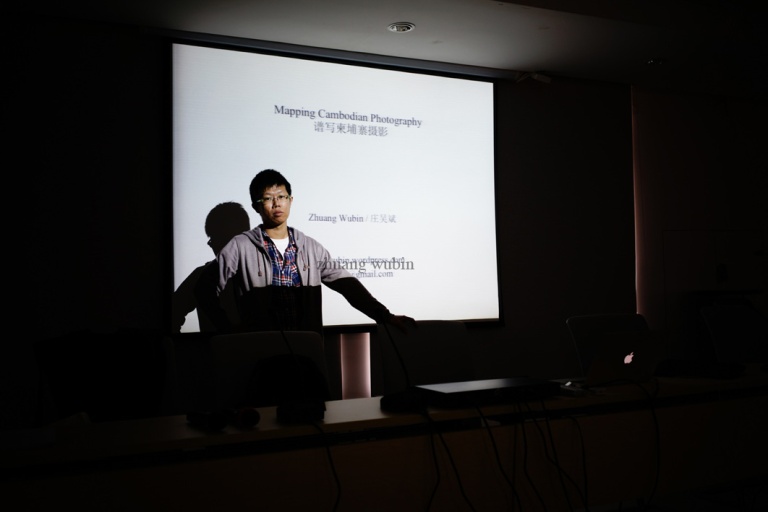

Photograph courtesy of Kevin Lee

At the end of the presentation, Shu Yang from the Xi’an Art Museum raises a question.
Photograph courtesy of Kevin Lee
*
This group exhibition nearly did not materialise. On 4 Jan 2014, days before the festival opened on 8 Jan, the organisers informed me that they would have to remove Heng Sinith’s The Victims of History: Voices of the Khmer Rouge Victims and Perpetrators (2002) because it was deemed too “strong”. This is actually not the decision of the organisers, who have already printed Heng’s work in the festival guide. The head of the publicity department of CPC (Communist Party of China) Xishuangbanna, the patron of the festival, felt that Heng’s work would give a wrong impression of communism and hence, forced its removal. Granted that the CPC had supported the Khmer Rouge (KR) for years, Heng’s work is not about the CPC. The connection is not even mentioned in the curatorial text of the exhibition and the introduction to his work. Neither is the discussion of the KR a taboo subject in China today. There are now several entries of the KR found on Baidu, China’s version of Wikipedia.
In other words, this is a case of over-reaction and self-censorship, exercised by the head of the publicity department.
My initial reply to the festival was to take down the entire exhibition, if they would not show Heng’s work. I would also stay home and skip the trip.
As a compromise, the festival promised to mount Heng’s work on the day after the opening. Understandably, the head of the publicity department was the guest-of-honour during the opening and the organisers could not refute his orders.
I am apologetic over this cat-and-mouse interlude behind my participation in this event.
*
Documentation of other works by Southeast Asian photographers, presented by fellow curators:

“Red Dream” / Ko Z
Curated by Shu Yang

“Endlessness” / Ma Ei
Curated by Shu Yang

“Water is Life” / Mak Remissa
Curated by Francoise Callier

KG Krishnan’s “Continuum” / Curated by Mervyn Leong
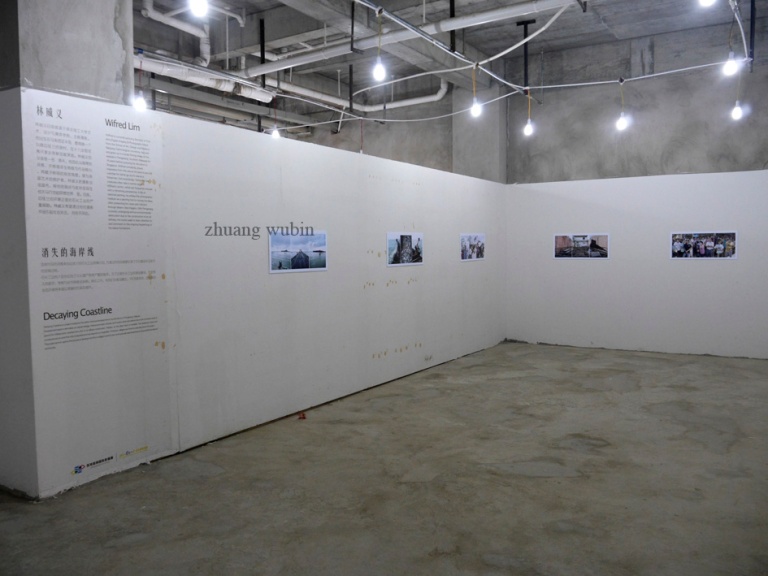
Wilfred Lim’s “Decaying Coastline” / Curated by Mervyn Leong

Yong Yennie’s “Past Lives” / Curated by Mervyn Leong

Do Manh Cuong’s “Twins” / Curated by Wang Xi
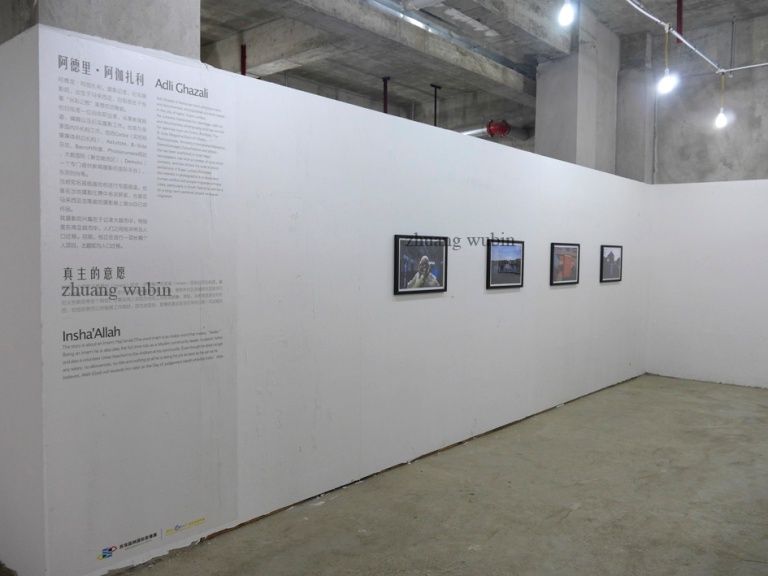
Adhi Ghazali’s “Insha’Allah” / Curated by Mervyn Leong

William Sim’s “The Building over the Sea is Taller” / Curated by Mervyn Leong

Geric Cruz’s “Second Star to the Right” / Curated by Mervyn Leong
*
Documentation of the trip to Xishuangbanna Foto Festival 2014:
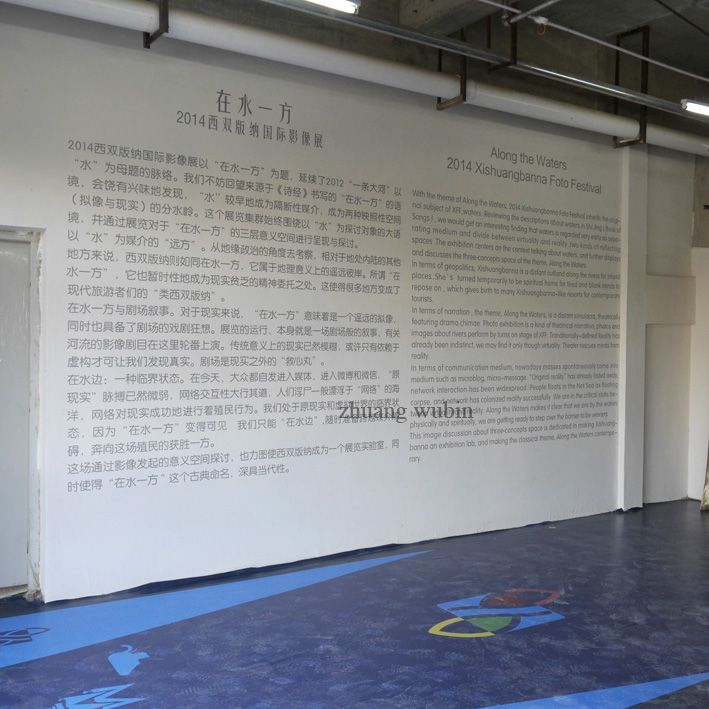


Meeting curator Yumi Goto again, on the opening of Xishuangbanna Foto Festival 2014. The last time I met her was in 2010 at Changsha, during another photofestival (International Orange Photo Festival) that both of us were involved.
Courtesy of Kevin Lee


Apparently, Zi Bo’s work has been exhibited by 2902 Gallery in Singapore. He complained to us that the gallery owner was unresponsive to his emails, which he felt was slightly disrespectful, so much so that he had to send an email virtually once every one or two days to find out more about the exhibition. When Zi met Zhang Xiao subsequently, the latter had the same complaints.
Courtesy of Yumi Goto

Courtesy of Yumi Goto

The work is about rediscovering the Mekong that he grew up with in the lower stretches of the mighty river. Zi notes that the Mekong in Yunnan (otherwise known as the Lancang River) has changed significantly in the last 20 years, so much that his encounters in Laos, Thailand, Cambodia and Vietnam remind him more of his childhood in Yunnan than the present-day Lancang River at Xishuangbanna.

9 Jan 2014
Courtesy of Kevin Lee
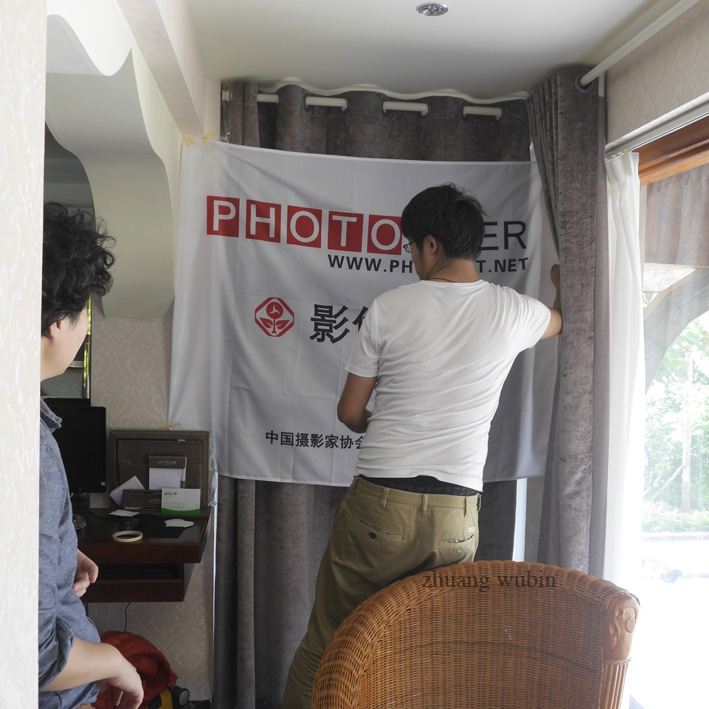

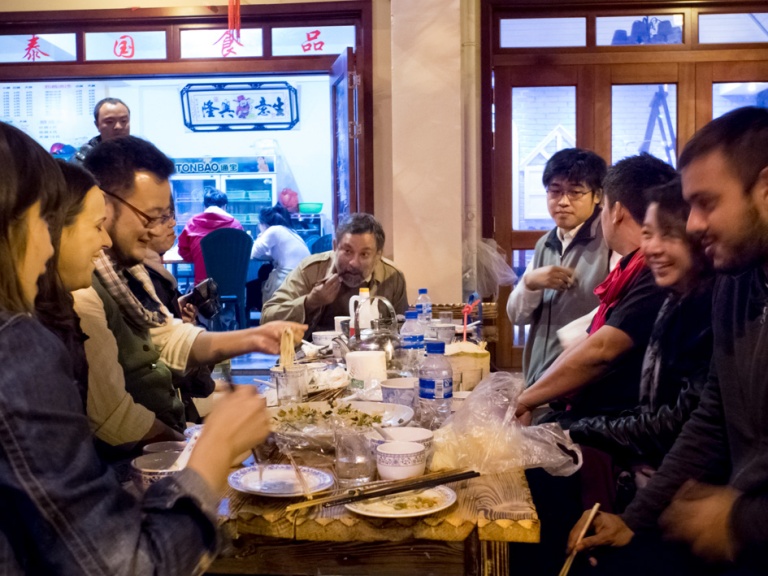
8 Jan 2014
Courtesy of Mikolaj Nowacki

Photograph courtesy of Kevin Lee

11 Jan 2014
Courtesy of Kevin Lee

Courtesy of Huang Ling

You must be logged in to post a comment.